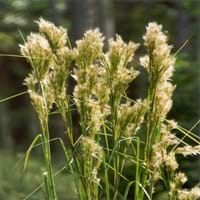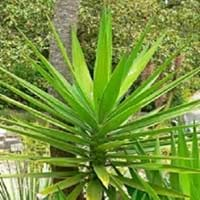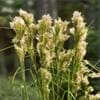Life Span
Perennial
Perennial
Origin
Caribbean, Central America
Southwestern United States, Mexico
Types
Broomsedge Bluestem, Broomsedge
Yucca aloifolia 'Purpurea' , Yucca aloifolia
Number of Varieties
Not Available
Habitat
ditches, Grassland, Moist Ditches, Moist Soils, Roadsides
coastal environs, Coastal sand dunes, mild coastal areas
USDA Hardiness Zone
5-9
7-9
Sunset Zone
H1, 3a, 3b, 4, 5, 6, 7, 8, 9, 14, 15, 16, 17, 18, 19, 20, 21, 22, 23, 24
2a, 2b, 3a, 3b, 4, 5, 6, 7, 8, 9, 10, 11, 12, 13, 14, 15, 16, 17, 18, 19, 20, 21, 22, 23, 24
Habit
Upright/Erect
Rosette/Stemless
Minimum Height
Not Available
Minimum Width
Not Available
Flower Color
Cream, Green, White
White
Flower Color Modifier
Bicolor
Not Available
Fruit Color
Not Available
Brown
Leaf Color in Spring
Green, Blue Green
Blue Green
Leaf Color in Summer
Light Green
Blue Green
Leaf Color in Fall
Gray Green, Yellow green, Bronze
Blue Green
Leaf Color in Winter
Gold, Tan, Bronze
Blue Green
Leaf Shape
Grass like
long with sharp edges
Plant Season
Fall, Winter
Spring, Summer, Fall, Winter
Sunlight
Full Sun, Partial Sun
Full Sun
Growth Rate
Medium
Very Slow
Type of Soil
Clay, Loam, Sand
Loam, Sand
The pH of Soil
Acidic, Neutral, Alkaline
Acidic, Neutral, Alkaline
Soil Drainage
Average
Well drained
Bloom Time
Late Summer, Early Fall, Fall, Late Fall, Early Winter
Late Spring, Early Summer
Tolerances
Not Available
Drought, Salt
Where to Plant?
Ground
Ground
How to Plant?
Root Division, Seedlings
Cuttings, Divison
Plant Maintenance
Medium
Medium
Watering Requirements
Keep ground moist, Water Deeply
Keep the Soil well drained, Needs very little water
In Summer
Lots of watering
Lots of watering
In Spring
Moderate
Moderate
In Winter
Average Water
Average Water
Soil pH
Acidic, Neutral, Alkaline
Acidic, Neutral, Alkaline
Soil Type
Clay, Loam, Sand
Loam, Sand
Soil Drainage Capacity
Average
Well drained
Sun Exposure
Full Sun, Partial Sun
Full Sun
Pruning
Cut or pinch the stems, Remove damaged leaves, Remove dead branches, Remove dead leaves
Remove damaged leaves, Remove dead branches, Remove dead leaves
Fertilizers
All-Purpose Liquid Fertilizer
All-Purpose Liquid Fertilizer
Pests and Diseases
Red blotch
Leaf spot, Scale
Plant Tolerance
Drought
Drought, Salt
Flower Petal Number
Single
Single
Foliage Texture
Coarse
Bold
Foliage Sheen
Matte
Matte
Attracts
Birds, Butterflies
Butterflies, Not Available
Allergy
Not Available
Unknown
Aesthetic Uses
Ground Cover
Borders, Cottage Garden, Wild gardens, Woodland margins
Beauty Benefits
Not Available
Not Available
Environmental Uses
Air purification, Food for animals, Food for birds, Provides ground cover, Wildlife
Air purification
Medicinal Uses
Not Available
No Medicinal Use
Part of Plant Used
Seeds
Not Available
Other Uses
Used as Ornamental plant
Beneficial species for attracting pollinators
Used As Indoor Plant
No
No
Used As Outdoor Plant
Yes
Yes
Garden Design
Container, Dried Flower/Everlasting, Feature Plant, Mixed Border, Rock Garden / Wall
Rock Garden, Wall, Wildflower
Botanical Name
ANDROPOGON glomeratus
Yucca gloriosa
Common Name
Bushy Beardgrass, Bushy Bluestem, Bushy Broom Grass
spanish dagger
In Hindi
Bushy Bluestem plant
Spanish Bayonet
In German
Bushy Bluestem Pflanze
Spanish Bayonet
In French
plante buissonnante Bluestem
Spanish bayonet
In Spanish
planta arbustiva andropogon
Spanish bayonet
In Greek
φυτό θαμνώδη BLUESTEM
Spanish bayonet
In Portuguese
planta arbustiva Bluestem
Spanish bayonet
In Polish
Krzaczaste Bluestem roślin
Spanish bayonet
In Latin
Bushy bluestem herba
Spanish bayonet
Phylum
Magnoliophyta
Magnoliophyta
Class
Liliopsida
Liliopsida
Clade
Angiosperms, Commelinids, Monocots
Angiosperms, Monocots
Tribe
Andropogoneae
Not Available
Subfamily
Panicoideae
Agavoideae
Number of Species
Not Available
Season and Care of Bushy Bluestem and Spanish Bayonet
Season and care of Bushy Bluestem and Spanish Bayonet is important to know. While considering everything about Bushy Bluestem and Spanish Bayonet Care, growing season is an essential factor. Bushy Bluestem season is Fall and Winter and Spanish Bayonet season is Fall and Winter. The type of soil for Bushy Bluestem is Clay, Loam, Sand and for Spanish Bayonet is Loam, Sand while the PH of soil for Bushy Bluestem is Acidic, Neutral, Alkaline and for Spanish Bayonet is Acidic, Neutral, Alkaline.
Bushy Bluestem and Spanish Bayonet Physical Information
Bushy Bluestem and Spanish Bayonet physical information is very important for comparison. Bushy Bluestem height is 120.00 cm and width 75.00 cm whereas Spanish Bayonet height is Not Available and width Not Available. The color specification of Bushy Bluestem and Spanish Bayonet are as follows:
Bushy Bluestem flower color: Cream, Green and White
Bushy Bluestem leaf color: Green and Blue Green
Spanish Bayonet flower color: White
- Spanish Bayonet leaf color: Blue Green
Care of Bushy Bluestem and Spanish Bayonet
Care of Bushy Bluestem and Spanish Bayonet include pruning, fertilizers, watering etc. Bushy Bluestem pruning is done Cut or pinch the stems, Remove damaged leaves, Remove dead branches and Remove dead leaves and Spanish Bayonet pruning is done Remove damaged leaves, Remove dead branches and Remove dead leaves. In summer Bushy Bluestem needs Lots of watering and in winter, it needs Average Water. Whereas, in summer Spanish Bayonet needs Lots of watering and in winter, it needs Average Water.





